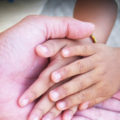Mindfulness is more than just being calm. It is a state of mental awareness that benefits the whole family. Mindfulness is the pathway to emotional competence for both parents and children. As parents, it allows us to be present in our parenting by carefully selecting the emotionally intelligent reactions, instead of succumbing to our instinctual responses.
Mindfulness is equally beneficial for our children. With mindfulness, children will be able to improve their abilities to pay attention, to self-regulate at times when they are upset, to make sensible decisions, and enhance cognitive focus.
What is Mindfulness?
Mindfulness is being focused on the present moment. It means you can pay attention to your thoughts, feelings and bodily sensations. This technique is used to acknowledge the present moment in order to build self-awareness, self-monitoring, and self-regulation skills. It helps us realize that we have choices which makes it easier to accept experiences.

Why is Mindfulness Important?
Being mindful can improve emotional awareness and reduce stress. It helps to increase concentration on the very task at hand. The ability to get in the “zone” will rev up productivity levels and increase successful output. Children can learn to recognize how emotions manifest in their bodies, to acknowledge when their attention has drifted, and to utilize strategies for impulse control. Children who practice mindfulness increase their self-awareness and emotional competence. These are imperative not only for self-esteem but also for the development of prosocial skills.
Listen to the bell
An easy way for children to practice mindfulness is to focus on paying attention to what they can hear. You could use a bell, a set of chimes, or a phone app that has sounds on it. Say to your children that you will make the sound, and they should listen carefully until they can no longer hear the sound, generally 30 seconds to a minute. According to Fay Gerhshgorin, Occupational Therapist, (Reg., Ont.), this exercise has a calming effect on many of the kiddos she works with during sessions. It is a fun and engaging way to teach children how to pay attention by connecting to their surroundings.
Play I Spy
This fun travel game will allow your child to observe their environment. By “spying” a color and guessing an object, your child is more aware of things they might have missed.
Establish a mindful bedtime routine
Does your child have difficulty falling asleep? Try to have them perform a body-scan meditation before going to bed. Start by asking your child to close his/her eyes and have them bring their attention to a body part. Ask them to flex and relax a muscle. Example, make a fist, squeeze then release. Have them repeat this process with other body parts. This is a calming way to return to the body to a state of calm at the end of the day.

Practice mindfulness with a breathing pal
For younger kiddos, directing them to simply pay attention to their breathing can be tough to do. A breathing pal is a strategy whereby your child uses a stuffed animal. Have your child lay down on their back with their breathing pal resting on their belly. Your child is guided to focus their attention on the rise and fall of the stuffed animal as they breathe in and out.
Eat mindful meals
As a family, sit at the table and describe the food. Close your eyes, eat slowly and describe how the food feels in your mouth. Ask your child to describe the texture, smell and taste of the food. Identify any thoughts they have while eating the food.
Engage in mindful conversations
Being able to eat as a family may be a rare occurrence. Having a family conversation is also rare. Start conversations by asking your children to share a situation from their day and how it made them feel. Ask them to tell you what thoughts they had and did they “feel” that emotion somewhere in their body.
Mindfulness and Physical Well-being

Take a mindful walk
Pay attention to not only what you see but what you hear or smell on the walk. How does your body feel while walking? What positive thoughts did you have? This is a great opportunity to practice breathing with intent. For adults, this is also a time when it may be worth finding out more about the relaxation benefits that Shape.com points out can be generated by CBD oil. Concentrate on taking slow deep breaths in through the nose and out from the mouth.
Enroll in a yoga class
A yoga class is great for physical and mental health. Children and adults can benefit from yoga as it establishes a connection with your mind and body.
Meditate with your children
Meditating sessions with your children can be a beautiful bonding experience. Note only is it an opportunity to role model meditation, it sets the stage to reconnect with your child. By doing this meaningful activity with your child, you are establishing positive rituals together.

With any new activity, consistency and practice is key. You can begin mindfulness awareness by watching a YouTube video or by reading books, like Moody Cow Meditates by Kerry lee Maclean, with your children. Engaging in mindfulness daily will improve your child’s emotional competence, as well as the overall functioning of the family.
References:
- Babauta, Leo. How to Meditate Daily. Retrieved from: https://zenhabits.net/meditate/
- Segal, Z.V., Williams, M.G., & Teasdale, J.D. (2002). Mindfulness-based cognitive therapy for depression: A new approach to preventing relapse. New York, NY: Guilford Press.
- Semple, R.J., & Lee, J. (2007). Mindfulness-based cognitive therapy for anxious children. Oakland, CA: New Harbinger Publications Inc.
Thank you to Fay Gershgorin, Occupational Therapist/Psychotherapist of New Therapy Solutions (www.newtherapysolutions) for collaborating with Janet Arnold on this article.
Share this Post







